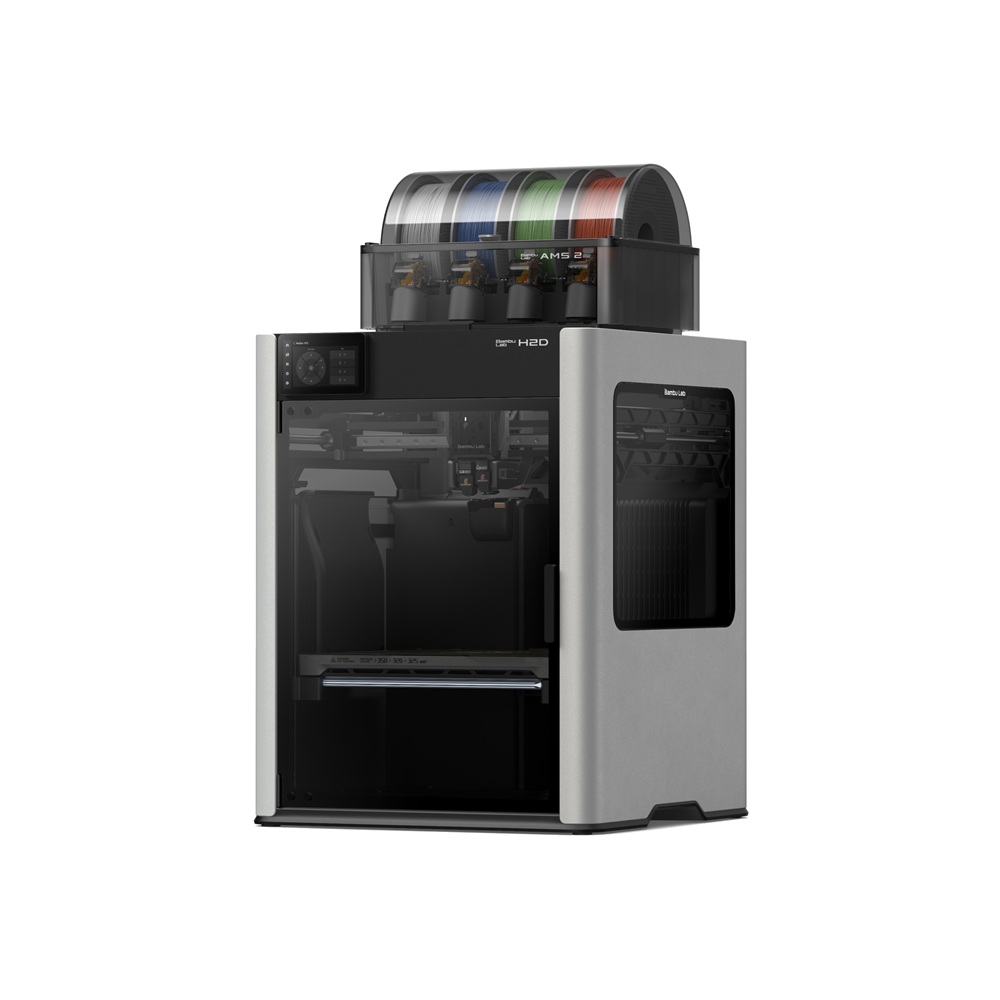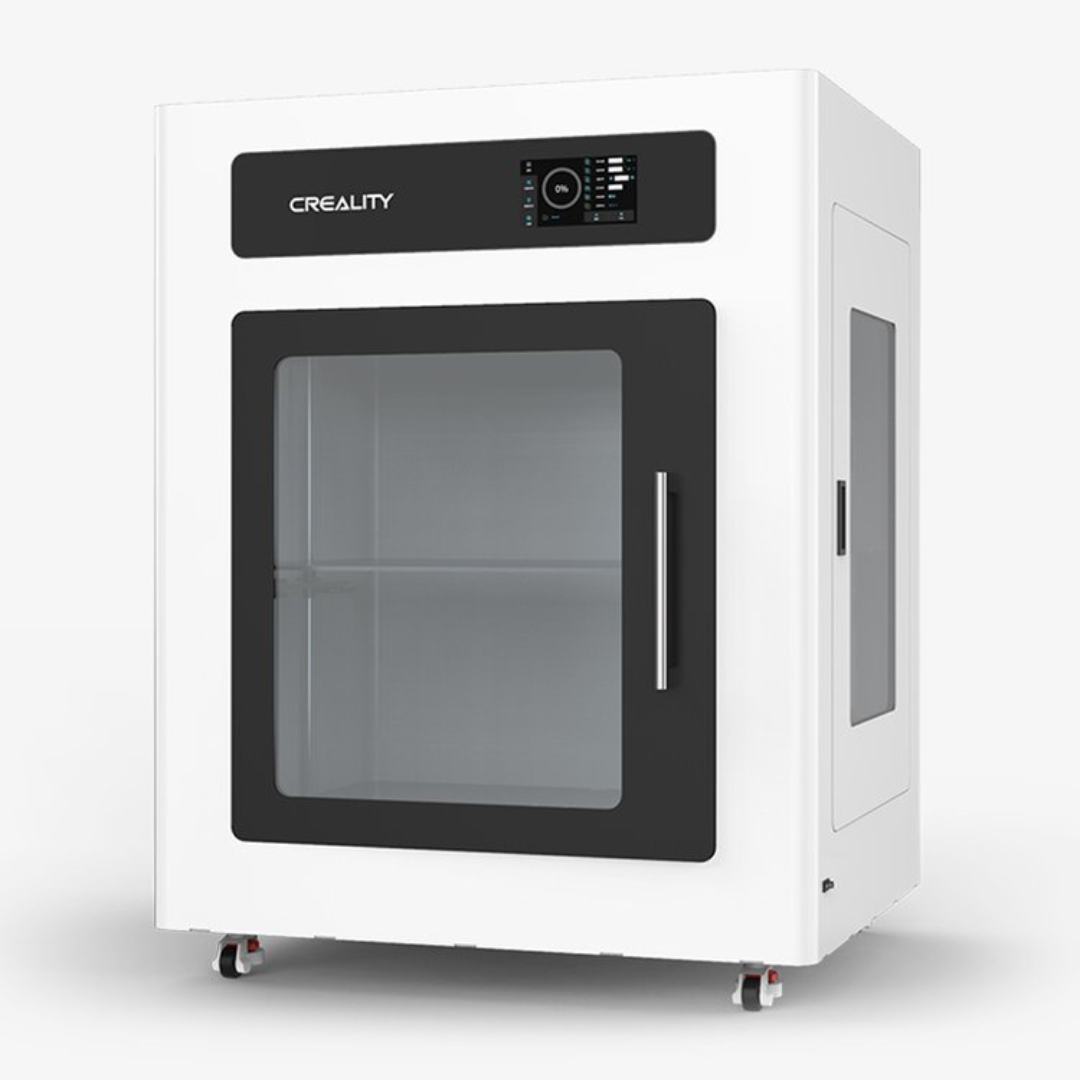Compare H2D vs CR 5060 PRO
Comparison between the best 3D printers
Choose the best 3D printer at the best price. The cheapest 3D printers are here.
Buy a 3D printer here with 3D Fila.
 |
 |
|
| Model | H2D |
CR 5060 PRO |
| Printing Material | Filament | Filament |
| Buy Filament for Bambu Lab H2D | Buy Filament forCreality 3D CR 5060 PRO | |
| Estimated price | $1899,00 | $4500,00 |
| Manufacturer | Bambu Lab | Creality 3D |
| Release Year | 2025 | 2021 |
| Print Volume [mm] | 350x320x325 | 500x500x600 |
| Printer Size [mm] | 492x514x626 | 905x800x1150 |
| Weight [kg] | 42,3 | 140 |
| Power Loss Recovery | YES | YES |
| Enclosed printer | YES | YES |
| Bed Leveling | Automatic | Automatic |
| Filament End Sensor | YES | YES |
| Bed type | Heated | Heated |
| Power supply system | Direct Drive | Bowden |
| Standard nozzle | 0,4 | 0,4 |
| Maximum Nozzle Temperature [°C] | 350 | 300 |
| Maximum Bed Temperature [°C] | 120 | 110 |
| Maximum printing speed [mm/s] | 600 | 200 |
| Filament holder | YES | YES |
| Camera for supervision | YES | YES |
| Recommended filaments | PLA, PETG, ABS, ASA, TPU, PVA, Nylon (PA) | PLA, ABS, PETG, PC, Nylon, Tritan |
| Recommended slicers | Bambu Studio | Cura, Simplify, Slic3r |
| Maximum Resolution [mm] | 0,01 | 0,1 |
| Processor | ATMEGA 2560 | |
| Display | Touchscreen 5'' | Display touchscreen 7'' |
| Power Supply | 220V / 900 W | |
| Connectivity | Wifi, Bambu bus, Cartão SD | SD / USB |
| Operating systems | Windows, Mac, Linux | |
| Date of registration in the system | 2025-03-31 | 2022-11-04 |
| Release date | 2025 | 2021 |
| Extra features | Bambu Labs H2D combines high-speed 3D printing with a chamber heated up to 65 °C, dual extrusion with automatic nozzle switching, an AMS for filament drying and exchange, and AI sensors that detect failures. It offers optional laser and digital cutting capabilities, features intelligent calibration through computer vision, vibration control, enhanced fire safety, and real-time camera monitoring. | Creality CR-5060 Pro 3D Printer: Designed to create large three-dimensional models, it offers a large workspace of 500 x 500 x 600 mm. It stands out for its fully enclosed work chamber, ensuring a constant temperature during printing, essential for the quality and precision of the models. Its robust structure, with dimensions of 905 x 800 x 1150 mm, is supported by a stable frame, providing durability and stability. The CR-5060 Pro offers easy access to the heated bed, either through the front door or the flap at the top of the casing, and includes a filament spool mounted in a lockable recess, ensuring material protection. Additionally, this printer is equipped with casters, facilitating its transport and handling in different environments. Ideal for professionals and enthusiasts looking for high quality in large-scale 3D prints. |
| Support for multiple colors and materials (AMS and CFS) | YES | NO |
Notes * |
||
| Cost-benefit | 7 / 10 | 4 / 10 |
| Hardware | 8 / 10 | 3 / 10 |
| Tela | . | . |
| Print volume | 4 / 10 | 5 / 10 |
| Performance | 5 / 10 | 2 / 10 |
Conclusion |
| In comparing the Bambu Lab H2D and the Creality 3D CR 5060 PRO, both printers cater to different user needs with distinct advantages and drawbacks. The H2D emerges as a more advanced option, featuring pioneering technologies such as dual extrusion with automatic nozzle switching and intelligent calibration through computer vision. It boasts a significantly higher maximum printing speed and better resolution, making it well-suited for high-quality, detailed prints and rapid prototyping. On the other hand, the CR 5060 PRO, while less expensive, offers a larger print volume, making it ideal for users requiring bigger projects. Its robust build and enclosed chamber contribute to consistent print quality, especially beneficial for professionals focused on precision in large-scale models. Although the H2D presents a more efficient and technologically sophisticated approach, its higher price reflects these advancements. Conversely, the CR 5060 PRO is a practical choice for those prioritizing space and stability over speed and innovative features. Ultimately, the decision between these two models should be guided by specific print requirements, budget constraints, and the intended use case. |

